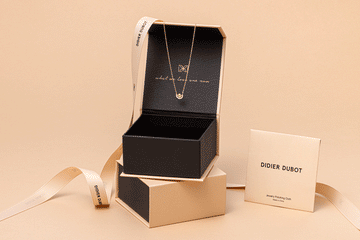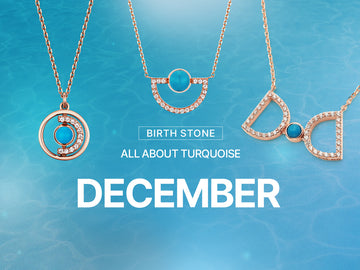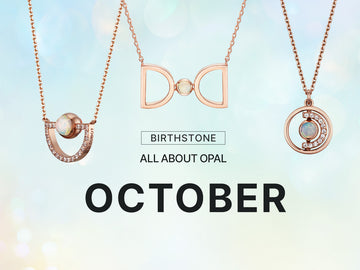What factors do you usually consider when shopping for jewelry? We all agree that metals are important, but many of us focus on the design and color without considering all of the metal’s properties. It’s not a competition or a ranking; each metal has its own pros and cons. Rather than asking yourself which metal is the best, ask yourself which metal is right for you. Ultimately it will be a highly individual choice that comes down to your needs and preferences. Whether you’re buying a gift for a loved one or are treating yourself to a new piece of jewelry, enhance your knowledge about metals before making your decision! We’ve prepared a handy guide to facilitate your next jewelry purchase.
White Gold
This is the metal for those that want the color of platinum, the affordability of silver, and the durability of gold. White gold, platinum, and silver are practically indistinguishable to the untrained eye, yet one option will likely give you the best value for your money. White gold is significantly cheaper than platinum while being more durable and scratch-resistant than silver. Like yellow gold, you should choose 14K or 18K jewelry for maximum quality and longevity.
Yellow Gold
The glowing tones of yellow gold have long been associated with warmth and luxury. It’s a popular choice for fine and demi-fine jewelry, and tends to look best on those with olive and dark skin tones. Like its silver cousin, pure gold is generally considered too soft for jewelry. There are many options for alloy blends when it comes to jewelry, but we recommend 14K or 18K gold. 14K gold contains a pureness content of 58.3%, and 18K gold consists of 75% pure gold. Both are great options for jewelry, but 14K gold will be slightly more durable and scratch-resistant than 18K gold.

Rose Gold
Soft and feminine, rose gold has taken the jewelry world by storm in recent years. Designers and consumers alike have fallen for the universally flattering rosy tones. A copper alloy is what gives rose gold its signature hue, as well as strengthening naturally soft pure gold. The only downside to rose gold is that the large copper content may cause irritation to people with sensitive skin.
Sterling Silver
Sterling silver is one of the most popular types of metal for demi-fine jewelry. It’s durable, hypoallergenic, and affordable. A sterling silver piece can last a lifetime with proper care. The cool white tone is flattering on many skin tones and creates a fresh and contemporary feeling. It’s important to specifically seek out sterling silver when purchasing jewelry. Pure silver is soft and malleable, which isn’t the greatest quality for jewelry. Sterling silver is blended with durable alloy metals, like copper. 925 sterling silver signifies a blend of 92.5% pure silver, and is considered one of the best types of silver for jewelry. Although sterling silver jewelry is durable, it’s also prone to tarnishing. Be sure to regularly clean your sterling silver jewelry to keep that gorgeous gleam.

Platinum
Many consider this bright white metal to be the height of luxury. Platinum is stronger and rarer than gold, making it a popular choice for fine jewelry and engagement rings. Any piece of platinum jewelry is considered an investment piece; its natural rarity and strength come with a hefty price tag. However, you’ll be getting your money’s worth with platinum jewelry. A platinum piece is a prime candidate for heirloom jewelry status. Over time platinum jewelry will develop a unique finish, or patina, that gives the illusion of a textured surface. Many people love the organic feel of a patina, but with regular polishing you can keep your platinum jewelry smooth and glossy.
Titanium
This high-tech metal is the perfect option for cutting-edge jewelry design. Titanium is equal parts durable and lightweight, making it an excellent base for alternative designs. Jewelers using titanium can be more creative with stone settings and metal inlays, as the metal’s natural strength will support any additions.

Palladium
Despite being a member of the platinum family, palladium is a relatively new metal in the world of fine jewelry. It has the same silvery tone, hypoallergenic properties, and impressive durability as platinum. One of palladium’s biggest advantages is its lightweight nature, making it a comfortable and luxurious choice for jewelry.
Tungsten
Dark and mysterious, tungsten is often the metal of choice for black and dark grey jewelry. Tungsten is naturally shiny, hard, hypoallergenic, and resistant to scratches. Its biggest fault is its brittleness. Tungsten can break if enough pressure is applied, which is why it’s generally used for more minimal styles like wedding bands. You will likely struggle to find tungsten pieces with gemstone settings. Still, it’s a good choice for those who like their jewelry simple, black, and shiny.
Which metals will you be choosing for your jewelry?
Writer: Maria Polansky

















